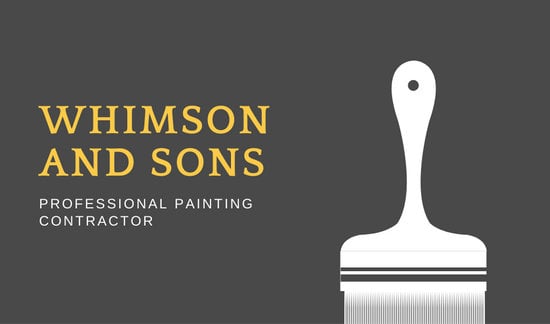Factors To Consider For Business Exterior Painting By Period: Essential Details You Need To Have
Factors To Consider For Business Exterior Painting By Period: Essential Details You Need To Have
Blog Article
Article Developed By-Fox Decker
When you're intending a business exterior paint project, seasonal factors can make or damage your results. You'll want to take into consideration exactly how temperature and moisture influence paint application and drying times. Picking the best season can ensure your paint sticks correctly and lasts much longer. Yet which periods are genuinely the most effective for this type of job? Let's discover the key elements that can impact your job's success.
The Influence of Temperature on Paint Application
When you're intending a business exterior painting job, the temperature can dramatically affect how well the paint adheres and dries out.
Ideally, you wish to repaint when temperature levels range between 50 ° F and 85 ° F. If it's too cool, the paint might not treat properly, leading to concerns like peeling off or breaking.
On the other hand, if it's also hot, the paint can dry too promptly, preventing proper attachment and causing an uneven finish.
You need to also consider the moment of day; early morning or late afternoon supplies cooler temperature levels, which can be more favorable.
Always check the manufacturer's suggestions for the certain paint you're using, as they usually give guidance on the suitable temperature variety for optimal outcomes.
Moisture and Its Impact on Drying Times
Temperature isn't the only ecological variable that influences your industrial exterior painting job; humidity plays a substantial duty also. High humidity levels can decrease drying out times significantly, influencing the overall top quality of your paint work.
When the air is filled with dampness, the paint takes longer to treat, which can bring about concerns like poor attachment and a higher threat of mold growth. If you're painting on a specifically damp day, be prepared for extensive delay times between coats.
It's crucial to keep an eye on neighborhood climate condition and strategy accordingly. Ideally, go for humidity levels in between 40% and 70% for optimum drying out.
Maintaining these factors in mind guarantees your project stays on track and provides a long-term finish.
Best Seasons for Commercial Outside Painting Projects
What's the very best season for your commercial exterior paint tasks?
Springtime and early autumn are normally your best choices. During these seasons, temperatures are mild, and humidity degrees are usually lower, creating suitable problems for paint application and drying.
Avoid summertime's intense heat, which can create paint to dry as well promptly, bring about poor bond and coating. Similarly, winter months's cool temperature levels can hinder appropriate drying and curing, risking the long life of your paint work.
read page for days with temperatures in between 50 ° F and 85 ° F for optimal results. Bear in mind to check the regional weather report for rain, as wet problems can destroy your job.
Planning around these variables guarantees your painting job runs smoothly and lasts much longer.
Conclusion
In conclusion, planning your commercial outside paint jobs around seasonal factors to consider can make a substantial difference in the end result. By organizing work during the suitable temperatures and humidity levels, you'll make sure better attachment and drying times. Remember to watch on https://commercialpaintersnearme09876.humor-blog.com/34129616/discover-key-guidance-and-tools-for-your-next-commercial-outside-paint-endeavor-that-can-greatly-impact-your-results and select the correct time of year-- spring and very early autumn are your best bets. Taking these steps will certainly help you attain a resilient and specialist surface that lasts.
